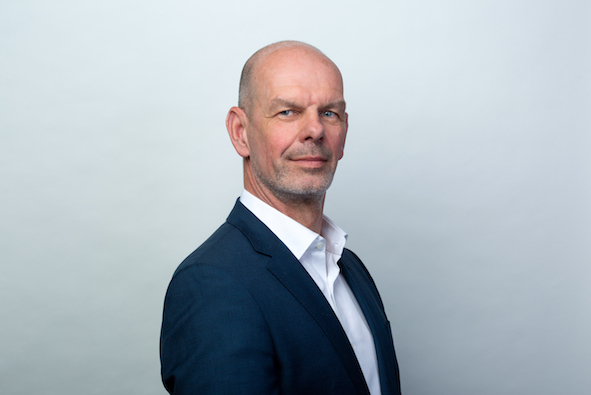Post - Blog

By Hauke Jürgensen

Energy Trading Leaders Summit 2026
With all the international appeals to accelerate the transition to clean energy from COP26 in mind, the key European wind industry players met at WindEurope Electric City this week to discuss how wind power can become the cornerstone of the European Green Deal. There’s no doubt that we need to accelerate our activities to tackle the climate crisis – not tomorrow, right n ow . The Intergovernmental Panel on Climate Change warned that the average global temperature could rise by more than 1.5 degrees by 2030. The Paris climate target signed by about 200 countries in 2015 will therefore be history in less than eight years.
It’s a race against the clock, because Europe has set ambitious goals. With its “ Fit - for - 55 Package,” the European Union plans to create the right framework for emission reductions of 55 per cent by 2030 by, among other things, increasing the share of energy from renewable sources to at least 40 per cent by 2030. But are we really progressing fast enough to win this race?
Let's take Germany as an example: The wind industry in Germany has outstanding expertise and a strong innovative drive. The nation is often praised for its transition to a new energy mix, referred to as the “ Energiewende .”
According to the German Energy Agency (dena), generation from offshore wind power needs to increase five-fold by 2050 for Germany to get enough green electricity and become climate-neutral. There are currently 1500 turbines in the North Sea, but to reach the goal of climate-neutrality we’d need up to 10 000. Are we on the right track? According to the German Wind Energy Association, 2021 will be the first year in ten where no new offshore wind-power capacity will be installed – due in part to the high regulatory barriers . The industry is calling on policymakers to get the market moving again and remove these barriers. However, the challenge doesn’t just lie on the power generation side: We also can’t leave grid expansion out of the equation.
Time and again, the electricity grid reaches its capacity limits. This means that the electricity generated by renewable energy plants can no longer be fed-in after a certain point in time. In this case, the plants need to be regulated and the produced green energy can’t be used. In the second quarter of this year, about 2.7 percent of renewable energy in Germany was curtailed under so-called “EinsMan” measures, control mechanisms that ensure that grid stability is maintained even if energy feed-ins to and withdrawals from the grid aren’t in balance. We’re talking about 1543 GWh of green electricity wasted, just in these three months. The estimated compensation claims filed by plant operators for this amounted to about €194.3 million. Roughly 71 percent of the grid bottleneck was in the transmission grid or at the transformation level between the transmission and distribution grids. It’s not enough to increase electricity generation from renewable energies; we also need the appropriate grid infrastructure to transport this electricity to where it can be consumed.
The expansion of wind power requires the right policies, especially to address planning and permitting – and not just for the build-out of wind power generation . To deliver the Green Deal, Europe also has to fully optimize the existing grid capacity and address bottlenecks in order to minimize curtailment. This also includes simplifying the approval processes when it comes to building new power lines in-country and across-borders to transport wind energy to where it’s really needed.
Against this backdrop, we welcome the plans in the German coalition agreement for more speed and commitment in grid expansion at all levels. To increase the share of renewable energies to 80 per cent by 2030 in Germany, the agreement also includes plans to at least halve the duration of procedures, planning and approval processes for grid expansion projects, to meet the prerequisites for hybrid interconnectors, meshed offshore grids and multi-terminal connections without delay. These steps would be immensely important. Now it's a matter of implementing the plans quickly because this year’s WindEurope Electric City Event has shown us one thing: The technology isn’t the problem; the right framework conditions are needed to fully tap the potential of wind energy. At Siemens Energy, we’re ready to guide our customers through the energy transition and help them bring wind energy to homes – for tomorrow’s greener generation.
